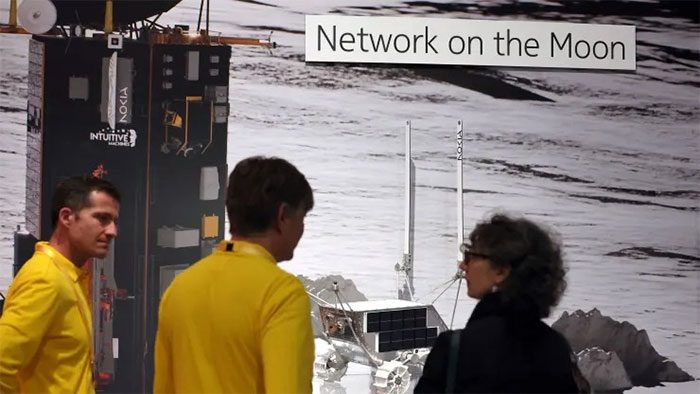Nokia is preparing to launch a 4G mobile network on the Moon by the end of this year, hoping to support lunar exploration missions and pave the way for human presence on the satellite.
According to CNBC, Nokia plans to send the 4G network to the Moon using a SpaceX rocket in the coming months, as confirmed by Luis Maestro Ruiz De Temino, the chief engineer of the Finnish telecommunications group at the Mobile World Congress trade show in Barcelona.
Nokia aims to establish the 4G network on the Moon to demonstrate that current wireless network technology can meet communication needs for future space missions. With this network, astronauts will be able to communicate with each other, remotely control rovers, stream real-time video, and send data back to Earth.
Nokia has also stated that its 4G technology is designed to withstand the harsh conditions of space. The network will be utilized in NASA’s Artemis 1 mission, which aims to send the first human astronauts to walk on the Moon since 1972.
For energy supply, the 4G network will be maintained by a base station equipped with antennas. This station will be housed in the Nova-C lunar lander (designed by the American aerospace company Intuitive Machines). Additionally, the operation of the 4G network will be supported by a solar-powered rover that will connect to the lander via LTE.

Nokia hopes to install a 4G data network on the Moon by 2023. (Photo: CNBC).
It is reported that SpaceX’s rocket will not take the Nova-C lunar lander all the way to the Moon’s surface. Instead, the lander will integrate its own propulsion system to complete the remaining journey. It is scheduled to land in the Shackleton crater, located along the southern edge of the Moon’s surface.
Anshel Sag, a principal analyst at Moor Insights & Strategy, stated that 2023 is an “optimistic target” for Nokia’s mission to bring a 4G network to the Moon.
“If the hardware system is ready, it is quite possible they can launch it in 2023 as long as their partners choose not to encounter any obstacles or delays.”
One of Nokia’s hopes with its 4G network system is to find ice on the Moon. Much of the Moon’s surface is currently dry, but recent unmanned probe missions to the satellite have yielded discoveries of ice remnants trapped in craters around the polar regions. This is believed to be a potential water source that could be processed for drinking, separated into hydrogen and oxygen for rocket fuel, or isolated to provide oxygen for astronauts.
Previously, Rolls-Royce was also in the process of researching a nuclear reactor to power future Moon residents and explorers.


















































